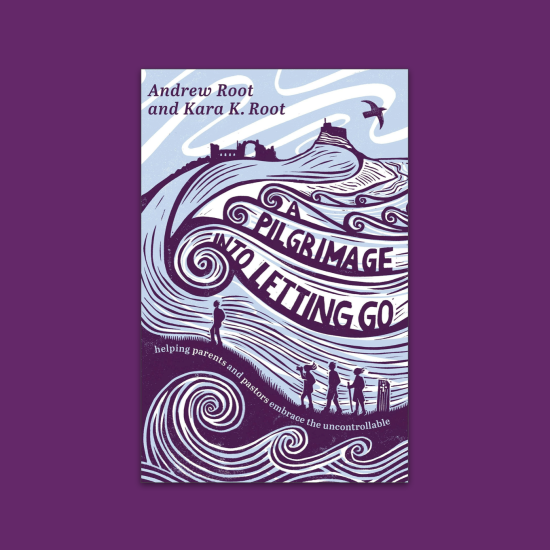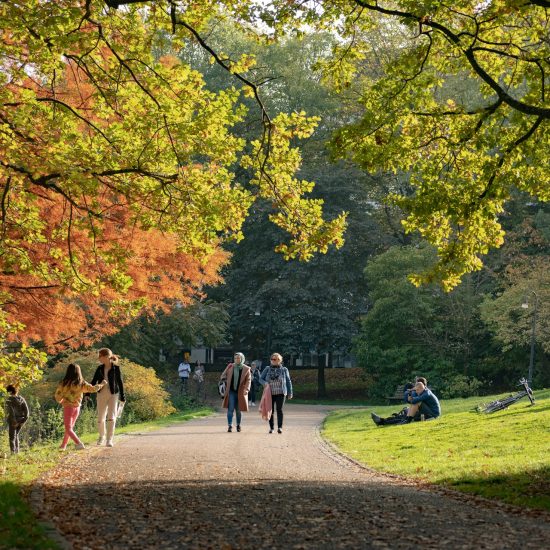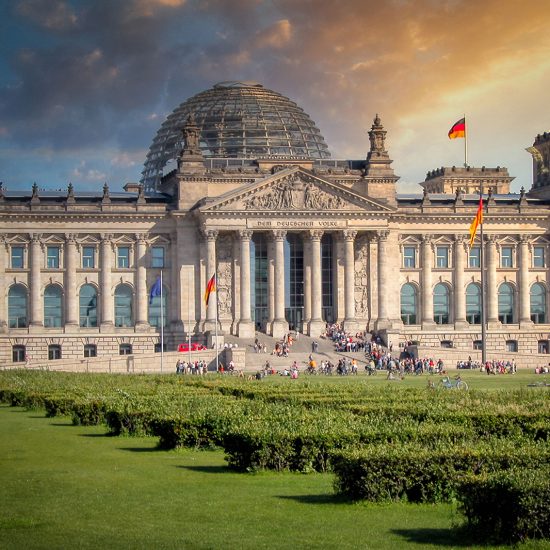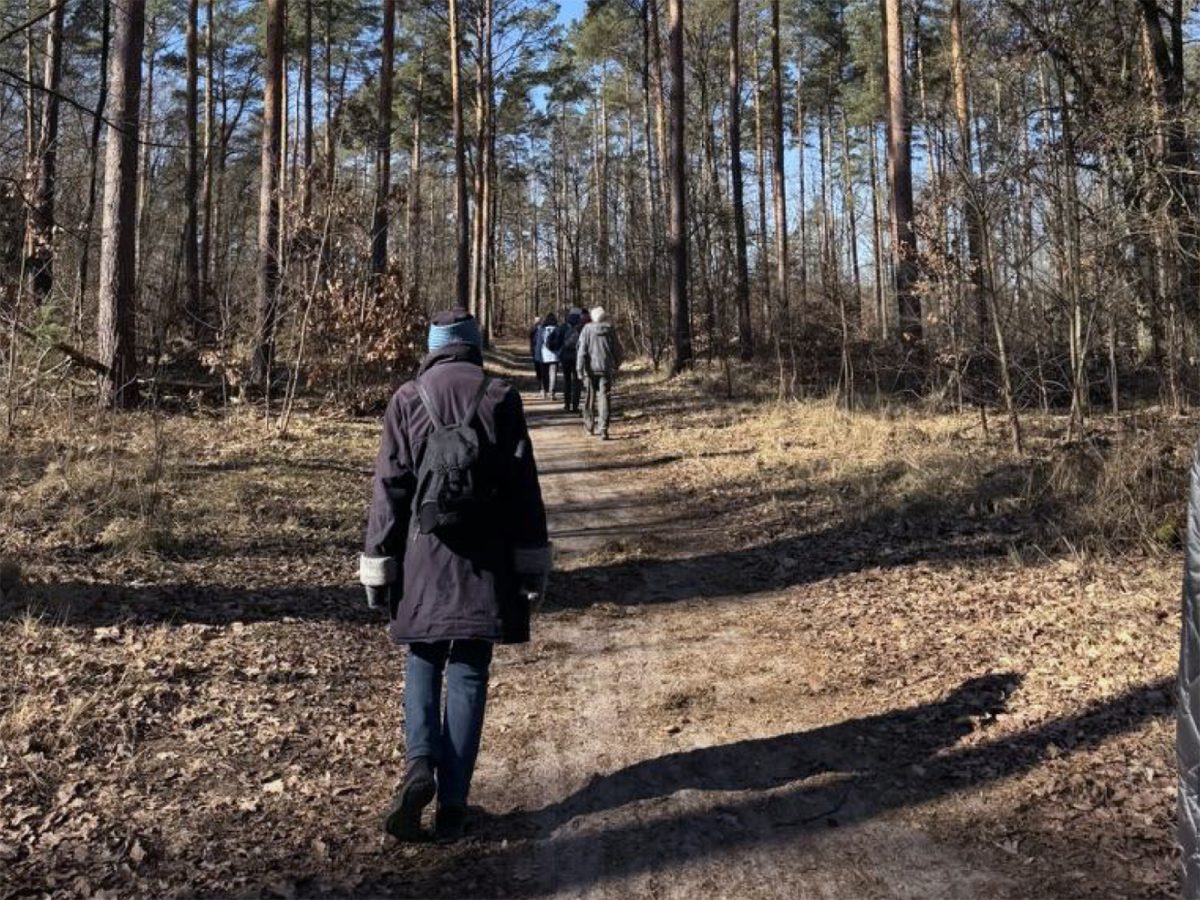
BERLIN (RNS) — A dozen walkers, many of them retirees in wool hats and fleece jackets, gathered in a silent circle in the Grunewald forest, just outside Berlin.
“Walk silently through nature and notice what you observe,” read Stephen Lemke, an adviser for senior citizens for the evangelical church in the Charlottenburg-Wilmersdorf borough of Berlin, on a Wednesday in March. He leads these “silent pilgrimages” once a month for anyone interested in exploring the connection between religion, nature, and self.
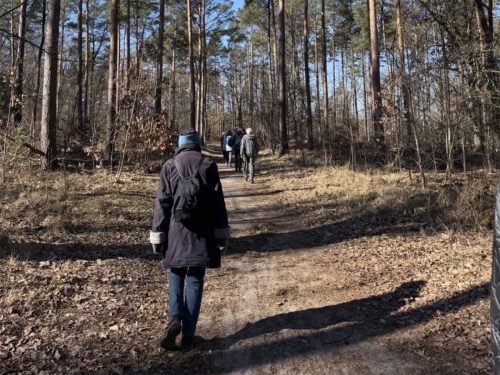
Participants on a silent pilgrimage walk through the Grunewald nature preserve on Wednesday, March 19, 2025, in Berlin, Germany. (Photo by Elissa Mardiney)
The group bowed their heads. “I hear the sound of the wind. I feel the sun on my skin. I enjoy the moment,” Lemke read. “But at the same time, I realize that this moment cannot be captured.”
After the meditation, they began an hourlong silent walk through the park.
Around Berlin, Christian pilgrimage walks led by various organizations are open to locals and visitors nearly every week. They aim to offer a way for people of all ages to engage with their faith — and community — without stepping foot in a church. Some are guided by pastors with an interest in the outdoors, while others are self-guided with stops at churches or other sacred sites, like the Spandau pilgrimage. Some last an hour, while others are multiweek expeditions.
Pilgrimages, which have gained popularity in the last couple decades across Europe, especially in southern Germany, provide a way for people in an aging and increasingly secular society to reconnect with their Christian faith.

Berlin-Spandau’s Pilgrimage Passport, where travelers can collect stamps from each church on the route. (Photo by Elissa Mardiney)
“A lot of people won’t go to church anymore, but they still are religious,” said Nicolas Budde, pilgrim pastor of the Kladow borough parish in Berlin. “I think the church has to think about ways to talk with people about religion, and I think that pilgrimage is one way to do it.”
In the 1500s, devout Catholics took long, arduous walks to visit sacred relics. Making the journey to a sacred destination such as Santiago de Compostela in Spain was an expression of Christian devotion, intended to prove one’s worthiness before God and cleanse the soul of sin.
But in 1520, Martin Luther, the German theologian and leader of the Protestant Reformation, criticized the practice. He argued pilgrimages had no basis in Scripture and were part of the greed and commercialism in the church that he detested. Luther believed God could be found anywhere and there was no need to visit a sacred site. Pilgrimages fell out of favor.
“In the Middle Ages, (pilgrimages were) more of an outside thing — you really wanted to know something from God, you wanted to praise him or you wanted to get forgiveness,” said Bettina Kammer, the public relations officer for the Protestant church in Berlin’s Spandau borough. “Nowadays, it’s more personal — people have this feeling that they’re looking for something, but they can’t quite put a finger on it.”
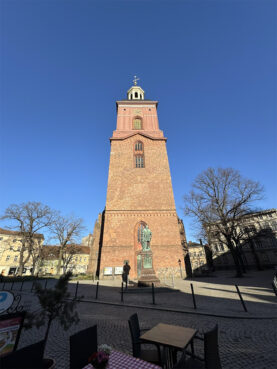
The St. Nikolai Evangelical Church in Berlin-Spandau, a Berlin suburb, is a stop on the Spandau pilgrimage route. (Photo by Elissa Mardiney)
Pilgrimages have also gained popularity through movies such as “I’m Off Then,” a 2015 German film, and the 2010 film “The Way,” starring Martin Sheen. Both are about the world’s most famous pilgrimage, the Way of St. James, or Camino de Santiago.
In 2020, the Berlin suburb of Spandau launched its own 75-kilometer loop inspired by the Camino de Santiago, connecting two dozen Protestant churches and two Catholic ones. Berliners and tourists can walk, bike, or canoe along color-coded routes linking the churches. Pilgrims can collect stamps at each church they visit.
A pilgrimage can spark a spiritual experience, Kammer said.
“People begin just by walking, and then they sit down in a church and say, ‘Well, it’s starting to move me. I feel something. It’s really a religious experience,’” she said, adding that these experiences are often reflected in churches’ guest books.
Budde, who pastors along the Spandau pilgrimage route, said that while a hike is the external act of walking a trail, a pilgrimage is an internal journey: “One walks with feet, but one makes a pilgrimage with one’s heart.”
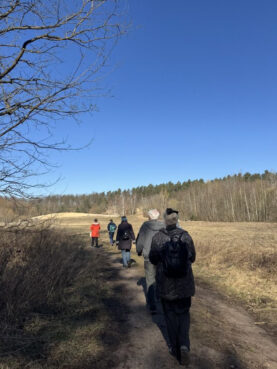
Participants combine physical fitness, inner reflection, community building, and religiosity during a silent pilgrimage walk on Wednesday, March 19, 2025, at Grunewald station near Berlin, Germany. (Photo by Elissa Mardiney)
Thomas N.H. Knoll, another pilgrimage leader in Berlin, founded and runs the information office at the St. Jacobi Pilgrimage Center. Visitors can stop by for pilgrimage passports, stamps, and a travel blessing before setting out on a pilgrimage in Germany or abroad.
These types of journeys can help people find the courage to move forward physically and emotionally, especially when one is facing a tough life situation like a loved one’s death, an illness, a conflict, or a job loss, he said. Knoll also touts being “transformed by experiencing nonavailability”— or spending time without one’s phone.
This can lead to deeper connections with nature and, therefore, God, he said. “Humans are part of nature,” Knoll said. “When we had a closer connection with nature, the spiritual was also present in everyday life.”
Pilgrimages can also offer a chance for new friendships, especially among seniors, who often experience isolation.
“It’s helpful for the elderly to not only keep moving physically, but also to connect with others in a meaningful, spiritual way,” Lemke said. From a religious perspective, these walks can serve as “new temporary forms of congregations.”
Young people who want to stay connected to their religion but don’t feel at home in a traditional church can also benefit. Two years ago, Alexander Steinfeldt founded Berlin Pilgrims, a group for young people interested in hiking and reflecting on philosophical and spiritual topics. A lifelong member of Germany’s Protestant church, Steinfeldt started the group when he was feeling disconnected from both community and faith.
“A foundation was missing in my life,” he said. When starting the group, he “rediscovered both hiking and religion.”
The hikes start with a prayer and encourage spiritual reflections throughout. But, he said, “You don’t need to be very spiritual or religious to feel the changes in you when you enter the outdoors.”
After the silent pilgrimage in Berlin’s Grunewald, Lemke’s group paused for reflection. One participant noted the subtle changes in the scenery that came with each passing day. Others agreed, speaking of the signs of spring — new buds on the leafless trees, bird song, a slightly warmer breeze.
Someone else looked forward to a cup of coffee. By the end, the participants, some approaching 90 years old, had all met someone new or found a quiet moment of connection with God.
Lemke closed with a prayer. “Stand in the sun and feel its warmth. May the Lord be with you, like the ground that carries you,” he said. “May the Lord be with you, like the air you breathe … like the bread that strengthens you … like the sun that makes your day warm and bright.”
For some, these short prayers are a return to religion. “Sometimes people come to me and say, ‘Wow, that was my first prayer in 10 years,’” Lemke told RNS. “So maybe it’s a small way back.”

